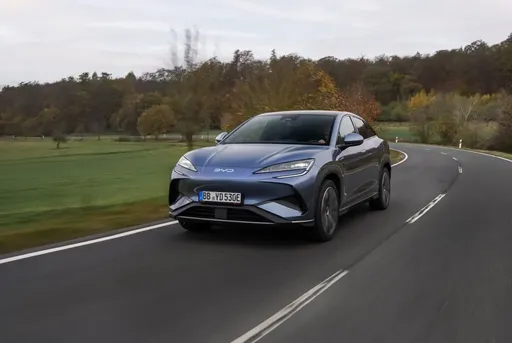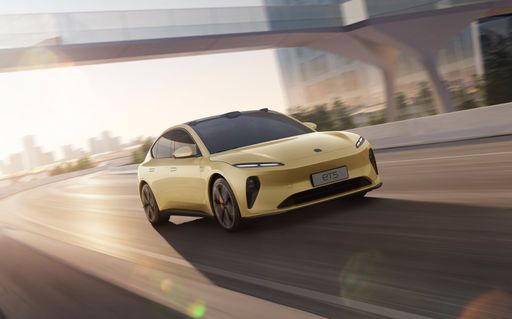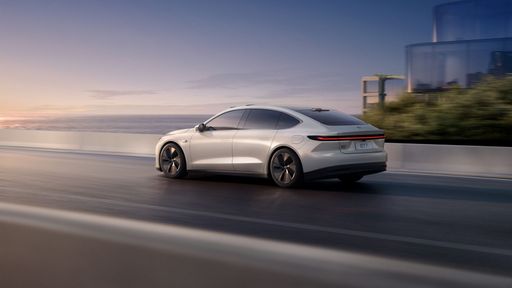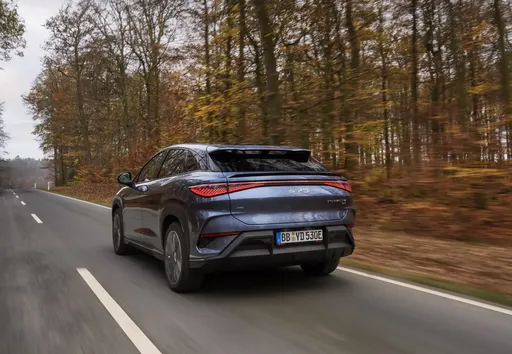NIO ET5 vs BYD Sealion 7 – Which car suits you better?
Two cars, one duel: NIO ET5 meets BYD Sealion 7.
Which one wins in performance, efficiency and value for money? Find out now!
Costs and Efficiency:
Price and efficiency are key factors when choosing a car – and this is often where the real differences emerge.
NIO ET5 has a minimal advantage in terms of price – it starts at 40700 £, while the BYD Sealion 7 costs 42800 £. That’s a price difference of around 2134 £.
In terms of energy consumption, the advantage goes to the NIO ET5: with 18.60 kWh per 100 km, it’s hardly perceptible more efficient than the BYD Sealion 7 with 19.90 kWh. That’s a difference of about 1.30 kWh.
As for range, the NIO ET5 performs slightly better – achieving up to 590 km, about 88 km more than the BYD Sealion 7.
Engine and Performance:
Power, torque and acceleration are the classic benchmarks for car enthusiasts – and here, some clear differences start to show.
When it comes to engine power, the BYD Sealion 7 has a hardly perceptible edge – offering 530 HP compared to 490 HP. That’s roughly 40 HP more horsepower.
In acceleration from 0 to 100 km/h, the NIO ET5 is a bit quicker – completing the sprint in 4 s, while the BYD Sealion 7 takes 4.50 s. That’s about 0.50 s faster.
In terms of top speed, the BYD Sealion 7 performs slight better – reaching 215 km/h, while the NIO ET5 tops out at 200 km/h. The difference is around 15 km/h.
There’s also a difference in torque: NIO ET5 pulls barely noticeable stronger with 700 Nm compared to 690 Nm. That’s about 10 Nm difference.
Space and Everyday Use:
Whether family car or daily driver – which one offers more room, flexibility and comfort?
Both vehicles offer seating for 5 people.
In curb weight, NIO ET5 is slight lighter – 2215 kg compared to 2225 kg. The difference is around 10 kg.
In terms of boot space, the BYD Sealion 7 offers noticeable more room – 520 L compared to 386 L. That’s a difference of about 134 L.
In maximum load capacity, the BYD Sealion 7 performs clearly perceptible better – up to 1789 L, which is about 654 L more than the NIO ET5.
When it comes to payload, NIO ET5 slightly takes the win – 475 kg compared to 410 kg. That’s a difference of about 65 kg.
Who comes out on top?
Overall, the BYD Sealion 7 shows itself to be shows small but notable strengths and secures the title of DriveDuel Champion.
It convinces with the more balanced overall package and proves to be the more versatile choice for everyday use.

BYD Sealion 7
NIO ET5
The ET5, a sleek and innovative model from NIO, seamlessly blends futuristic design with advanced electric vehicle technology. Its interior offers a luxurious yet minimalist vibe, showcasing high-quality materials and cutting-edge digital interfaces. With impressive range capabilities and dynamic performance, the ET5 is set to captivate both car enthusiasts and those focused on sustainable driving solutions.
details @ NIO
@ NIO
 @ NIO
@ NIO
BYD Sealion 7
The Sealion 7 captivates with its striking design and impressive performance that appeals to both enthusiasts and casual drivers alike. With a focus on comfort and advanced technology, this model redefines the driving experience, making every journey enjoyable. Its sleek silhouette coupled with an innovative interior showcases the perfect blend of style and functionality.
details @ BYD
@ BYD
 @ BYD
@ BYD
 @ BYD
@ BYD

|

|
|
|
|
Costs and Consumption |
|
|---|---|
|
Price
40700 - 58700 £
|
Price
42800 - 52300 £
|
|
Consumption L/100km
-
|
Consumption L/100km
-
|
|
Consumption kWh/100km
18.6 - 18.9 kWh
|
Consumption kWh/100km
19.9 - 21.9 kWh
|
|
Electric Range
456 - 590 km
|
Electric Range
456 - 502 km
|
|
Battery Capacity
73.5 - 90 kWh
|
Battery Capacity
-
|
|
co2
0 g/km
|
co2
0 g/km
|
|
Fuel tank capacity
-
|
Fuel tank capacity
-
|
Dimensions and Body |
|
|---|---|
|
Body Type
Hatchback
|
Body Type
SUV
|
|
Seats
5
|
Seats
5
|
|
Doors
5
|
Doors
4
|
|
Curb weight
2215 - 2235 kg
|
Curb weight
2225 - 2435 kg
|
|
Trunk capacity
386 L
|
Trunk capacity
520 L
|
|
Length
4790 mm
|
Length
4830 mm
|
|
Width
1960 mm
|
Width
1925 mm
|
|
Height
1499 mm
|
Height
1620 mm
|
|
Max trunk capacity
1135 L
|
Max trunk capacity
1789 L
|
|
Payload
455 - 475 kg
|
Payload
410 kg
|
Engine and Performance |
|
|---|---|
|
Engine Type
Electric
|
Engine Type
Electric
|
|
Transmission
Automatic
|
Transmission
Automatic
|
|
Transmission Detail
Reduction Gearbox
|
Transmission Detail
Reduction Gearbox
|
|
Drive Type
All-Wheel Drive
|
Drive Type
Rear-Wheel Drive, All-Wheel Drive
|
|
Power HP
490 HP
|
Power HP
313 - 530 HP
|
|
Acceleration 0-100km/h
4 s
|
Acceleration 0-100km/h
4.5 - 6.7 s
|
|
Max Speed
200 km/h
|
Max Speed
215 km/h
|
|
Torque
700 Nm
|
Torque
380 - 690 Nm
|
|
Number of Cylinders
-
|
Number of Cylinders
-
|
|
Power kW
360 kW
|
Power kW
230 - 390 kW
|
|
Engine capacity
-
|
Engine capacity
-
|
General |
|
|---|---|
|
Model Year
2023
|
Model Year
2024
|
|
CO2 Efficiency Class
A
|
CO2 Efficiency Class
A
|
|
Brand
NIO
|
Brand
BYD
|
What drivetrain options does the NIO ET5 have?
The NIO ET5 is offered with All-Wheel Drive.
The prices and data displayed are estimates based on German list prices and may vary by country. This information is not legally binding.
